






Strategic Alignment: What It Is and How to Achieve It.
What is strategic alignment?
What’s the strategy? You’ve probably asked—or have been asked—this many times. Having a strategy is no novel concept. Having a strategy in place is the foundation for transformational change. It acts as the North Star and provides a common goal for your organization. Business strategies receive the lion’s share of executives’ attention, but even the most robust strategy is useless unless supported by appropriate organizational capabilities: the execution.
Any strategy has little value until implemented. What follows next is the crux of why that top 10 percent hit their goals. Enter strategic alignment.
Strategic alignment happens by design and is often the missing ingredient for your success. According to Creately, “strategic alignment is the prudent arrangement of the various internal and external elements of an organization—from its business strategy to its organizational structure—to best support the achievement of its long-term goals and purpose.”
By analyzing and aligning various elements of your organization, you can best ensure your long-term success. High-performing organizations are often the most aligned, engaged, prepared, and change-ready.
We’ll dive into ways to achieve this, but first, consider your organizational architecture and assess whether your model meets your business needs.
Why is organizational architecture important to understand and get right at your organization? Because efforts to communicate strategy and create interconnections, support, and momentum won’t reach their potential in a mismatched organizational structure.
From the traditional bureaucracy model to the—often referred to as “more innovative”—network model, alignment of your organizational architecture matters. If you have strategies around efficiencies with a model that represents a flexible network, this may not work. It could be great for creativity but not a fit for efficiency. Often a major leadership challenge, it’s important to clarify your organization’s architecture to ensure your model meets your business needs.
See also:
- Looking ahead, leadership alignment faces intensifying challenges. Read about how to marry the human and the digital for a new approach to leadership alignment.
- If your organization has been sluggish at keeping pace with modern technology, processes, or changing market demands, transformational change is necessary.
- Despite all the research—and attention from leadership teams—high-performance culture is still an aspiration rather than a reality for many of us.
- The field has gone virtual. Have you? Get tips and tools you need to transform your tried and true practices for the digital landscape.
The importance of strategic alignment
Strategic planning plus implementation excellence equals strategic alignment, which can positively influence your organizational alignment. Yes, read that one again.
Let’s focus on “implementation excellence” for a moment. Think about the people that make up your organization across business units, departments, and teams. They’re your most important asset and need reassurance that they’re a priority. Implementing any strategy begins by educating, involving, and aligning the people responsible for executing it. People will be more connected to something they are a part of and believe in. If you’re struggling with team alignment in your organization, check out our insightful article on 5 Ways to Achieve Team Alignment in Your Organization.
It should become clear that strategically aligned organizations have a better chance of success in today’s challenging business environment. Strategy, organizational capabilities, and architecture must be in sync.
“In an aligned enterprise the whole is worth more than the sum of the parts,” according to Oxford Professor Jonathan Trevor in his YouTube video explaining how to lead strategic alignment.
And Forbes says, “There is no universal or one-size-fits-all prescription for a winning business. But corporate leaders today seem to agree that strategic alignment is high on the list.”
How to achieve strategic alignment
Align and unite your leadership team
In today’s world a leader needs to be able to fly high and land softly, meaning you need to think both conceptually with a bird’s-eye view across the whole organization, and practically with the ability to help the rubber meet the road.
Lack of strategic alignment often starts at the top, negatively impacting leaders at all levels getting “on board.” An MIT Sloan School survey of more than 4,000 managers found that only 28% could correctly list three of their firms’ top strategic priorities. Many organizations get caught in a vicious cycle that often results in a strategy execution gap.
This couldn’t ring truer in larger siloed organizations where resources are often allocated to a business group’s primary agendas versus company-wide strategic priorities. Without leaders who actively build alignment beyond pockets within their groups, an organization is simply a collection of individuals working toward their self-interest. Inc.com explores this further with 4 Simple Steps to Unifying Your Team.
And let’s not forget the need to unite the frozen middle management who need to be the agents of any transformational change. Often, to change an organization, people need to change their behavior, and they don’t like to do that. Yet, engaged in the right way, they’ll be the catalyst for delivering outstanding results.
Bring your leadership groups together to have one coherent framework to discuss the company as a whole, addressing current and future states.
Develop and deliver the strategic playbook
According to AchieveIt, the fundamental purpose of strategic planning is to align a company’s mission with its vision. The mission is the starting point, the vision is the destination, and the strategic plan is the roadmap that helps you navigate from one to another.
As we navigate a new way of working in the corporate world, the need for a clear vision, values, and goals is more important than ever. These drive alignment and can be a powerful playbook for your organization when appropriately communicated and supported with actions.
Change strategist coach Kathy Wilson shares a play-by-play in her “Strategic Planning Playbook.” You can and should revisit your strategic plan to make sure key initiatives and goals remain valid, and if any strategy or tactic opposes your organization’s values, then it should be reconsidered.
And remember, you can’t assume that every member of your strategic planning team can articulate your mission, vision, and values. Keep them current, ensure they resonate, and embed them in all aspects of your business.
Inspire commitment
When you walk into a high-performance organization, you can feel the difference. People are energized and confident about their organization’s strategy and the changes occurring, rather than resigned to them. This is because they’ve likely been part of the strategic process.
According to the accomplished organizational health expert, Patrick Lencioni, commitment is a function of clarity and buy-in. Gaining commitment from team members is not the same as getting consensus. When you reach a consensus, you reach a compromise, which may not get the best result. Commitment comes with clarity of purpose along with trust and appropriate conflict. Even if only one idea is pursued, every team member understands why and supports it—both inside the team and when communicated beyond.
“Buy-in is much easier if your employees participated in developing the strategy,” explains Robert Bradford in how essential buy-in is for your strategy, echoing the need for commitment.
Everyone needs to feel included and motivated to work towards the intended goal. So, it’s in your organization’s best interests to get as many people as practical involved in the strategic planning process. For those not intimately involved, finding ways to contribute to the strategic decision-making (ask how they’re going to deliver on strategy, don’t tell) from the bottom up will help create connection, understanding, and less resistance when introducing strategic plans and priorities.
Different levels of your organization require different channels for feedback and input, everything from executive leadership meetings to manager and employee 1:1s.
Bring the designers and deliverers together with cross-functional collaboration
You have a strategic plan, you’re clear on your organizational architecture, your leadership team is aligned and on board, and the strategic playbook is at play. Now—have you thought about untapped possibilities within a cross-functional collaborative environment?
In a cross-functional collaborative environment, teams from different business functions and groups come together to support a common strategic goal or priority.
Truenxus breaks down cross-functional collaboration challenges and solutions and explains why it’s worth the investment to bring teams together and can lead to innovation, increased efficiency, and engagement—Not to mention more alignment across different business functions as a result of awareness and involvement.
Don't set and forget
Have you had a strategic priority that made the rounds and then something life-altering like a pandemic hit? Ok, it doesn’t have to be a pandemic, but even a change in senior leadership, product or service, etc., can cause a strategic priority to change or be housed for a while. While planning, did you outline a process to adapt in the wake of change?
Strategies should be evolutionary, not revolutionary. They’re big picture and often carry long timeframes. Inevitably things change along the way.
The ability to be agile with flexible work models is a good starting point for evolving with the times. It’s prudent to outline a process for re-evaluating and re-aligning your strategic plan right out of the gate. This way, everyone from the intimately involved planners to those that weigh in from the frontline will be comforted by the process of reassessing risks, challenges, potential opportunities, and future goals.
Washington State University reiterates that strategic planning should not be viewed as “a one-time project that produces a milestone document of its best thinking at the moment” to achieve its vision.
Use a strategic alignment model
So how does your organization measure up? Check your alignment with a strategic alignment model to find out. These provide a visual guide of how priorities are linked and aligned vertically and horizontally through your organization.
This is how The Center for Management and Organization Effectiveness defines an alignment model:
Develop strategic alignment with collective intelligence
Peter Drucker says, “culture eats strategy for breakfast.” This implies that culture will determine your success no matter how effective your strategy. Are you tapped into your culture and aware of where you measure up in achieving strategic alignment?
No matter your organization’s size, whether 10 people or 10,000+, don’t underestimate the power of collective intelligence when it comes to improving your strategy, driving better alignment, and organizational performance. After all, your people are your greatest asset.
Strategic alignment FAQs
How do I get strategic alignment in my organization?
Is strategic alignment effective?
Where can I learn more about alignment?
Conclusion




